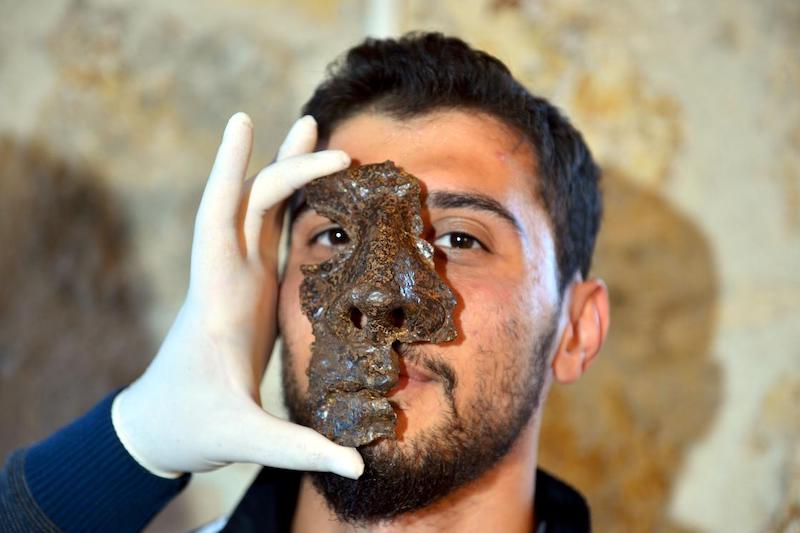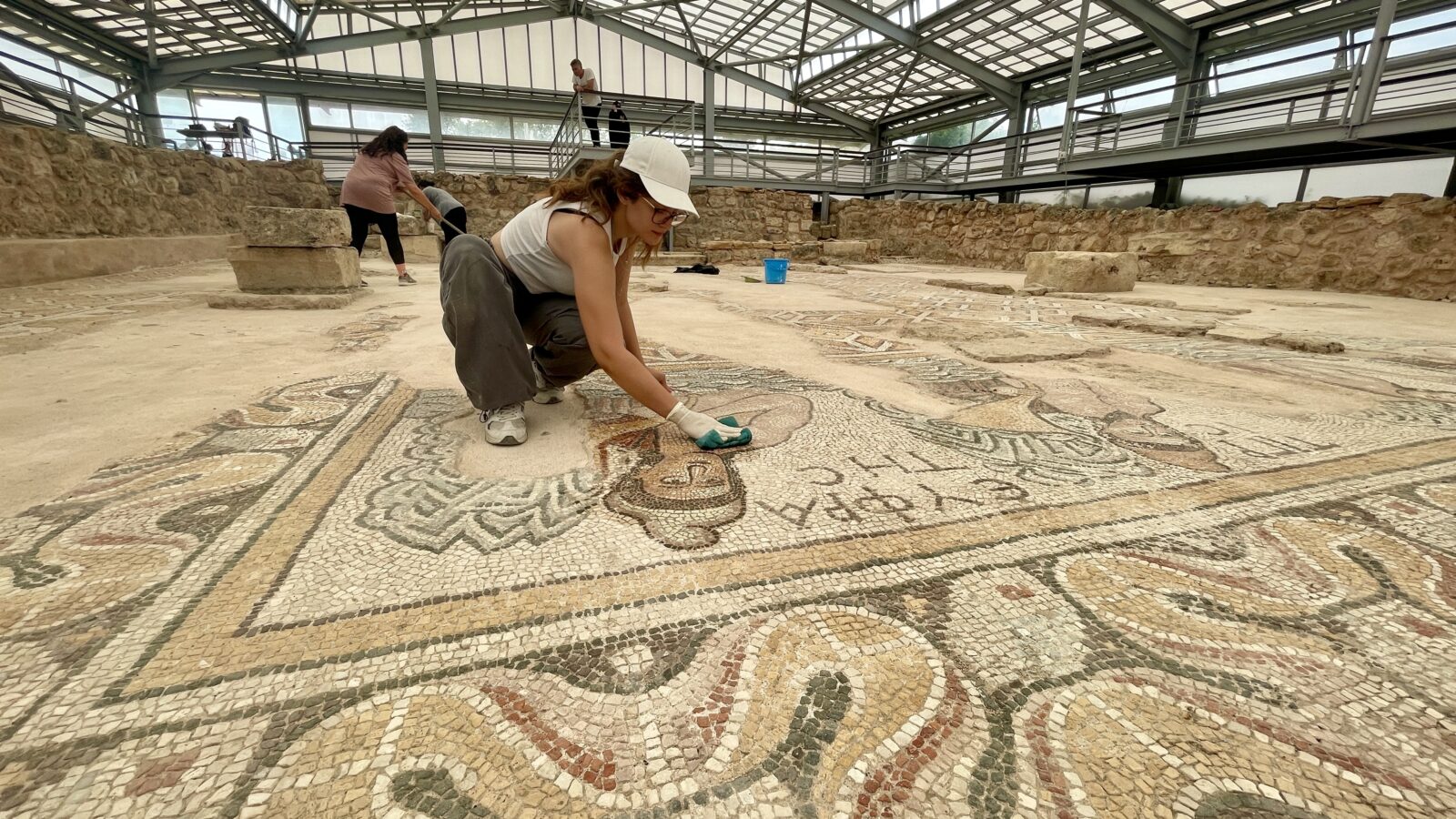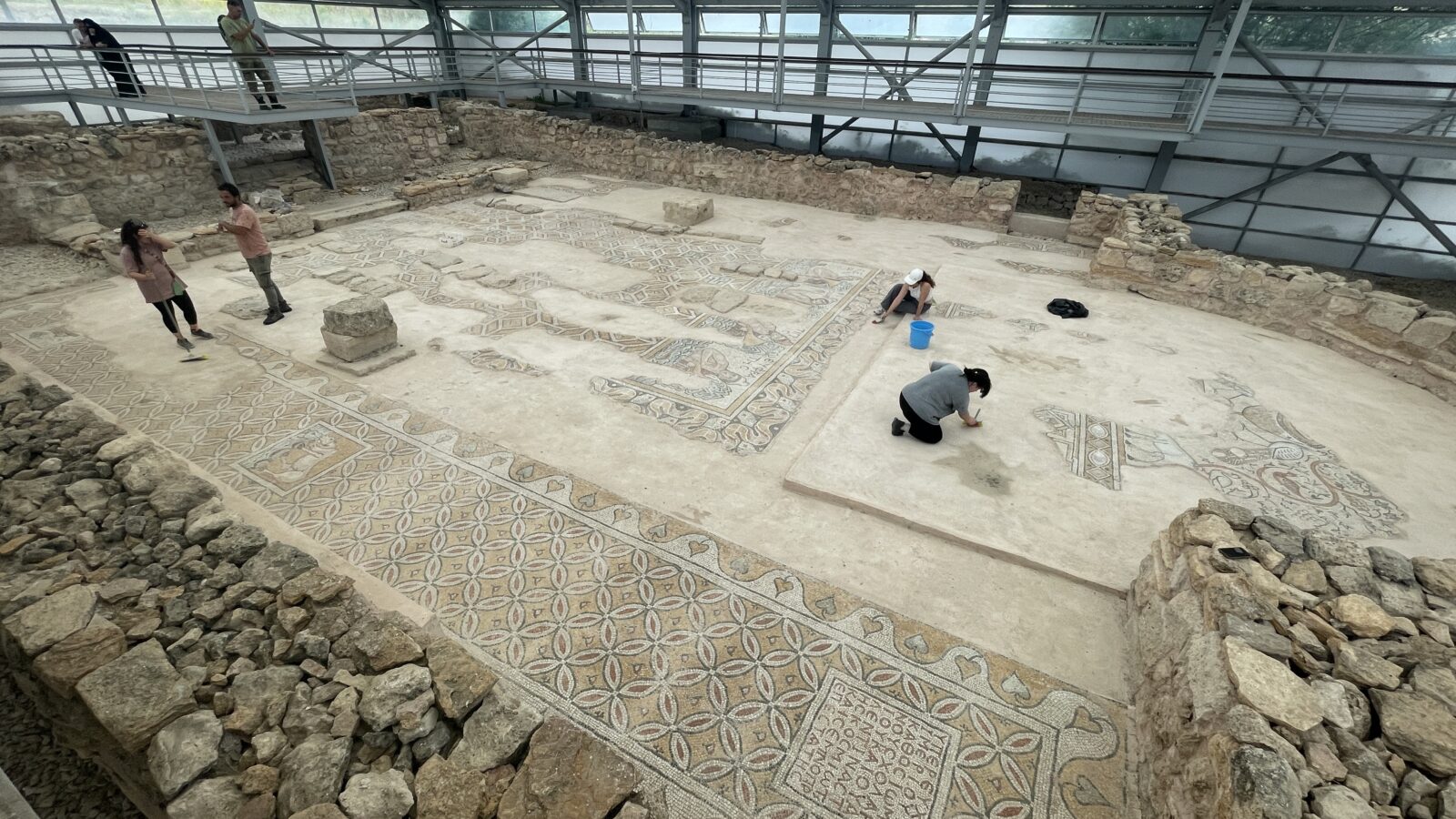
Excavations continue at the Hadrianopolis Ancient City in the Eskipazar district of Karabuk. The ancient city, which was inhabited during the late Chalcolithic, Roman, and early Byzantine periods, is renowned for its mosaics and is often referred to as the "Zeugma of the Black Sea."
The excavation and restoration work is being carried out by a team of 60, led by associate professor Ersin Celikbas from the archaeology department of Karabuk University's Faculty of Letters.
During the excavations at Hadrianopolis, an 1800-year-old iron mask believed to be from the Roman period was found. This discovery provides significant insights into the military history and social structure of the ancient city.
Celikbas told Anadolu Agency (AA) that excavations will continue this year in the area where the mask was found. "We aim to uncover similar examples of this mask or different military artifacts," Celikbas said.

Celikbas stated that they have made significant findings in the ancient city and that the excavation team will be expanded. This year, two different teams from Germany will join the excavations.
Celikbas mentioned that they will focus on the area known as the "castle" and the adjacent structure. He emphasized that expectations for Hadrianopolis have increased both regionally and scientifically, leading to new additions to the team.

Celikbas noted that they obtained valuable data in 2023 that garnered public and media attention.
He highlighted the discovery of seeds found inside a container as particularly significant and stated that excavation work in this structure would continue.
Additionally, excavation and restoration work will proceed in front of the newly opened "Bath A" structure.

Celikbas explained that they are in the final stages of transforming Hadrianopolis into an open-air museum.
"Our welcome center is 90% complete. Our walking paths and exhibition areas are prepared. We have also completed the restoration and exhibition of some structures. Even in its current state, I can say that it surpasses many open-air museums in Türkiye. We hosted around 15,000 to 20,000 tourists during the holiday period. This is truly encouraging and promising for the future. In the coming years, Hadrianopolis will become one of the most important visitor attractions in the region," he said.
Celikbas emphasized that the excavations in Hadrianopolis provide critical information about the region's history.
"Our excavations have revealed that settlement activities in the Hadrianopolis area began approximately 5,500-6,000 years ago. These findings significantly contribute to the illumination of the region's history," he said.
He noted that this situation has attracted the attention of scholars both in Türkiye and around the world.
The excavations at Hadrianopolis Ancient City continue to bring the region's historical and cultural heritage to light. The discovery of the 1800-year-old iron mask offers valuable clues about Roman military life while also enhancing the ancient city's tourism potential.